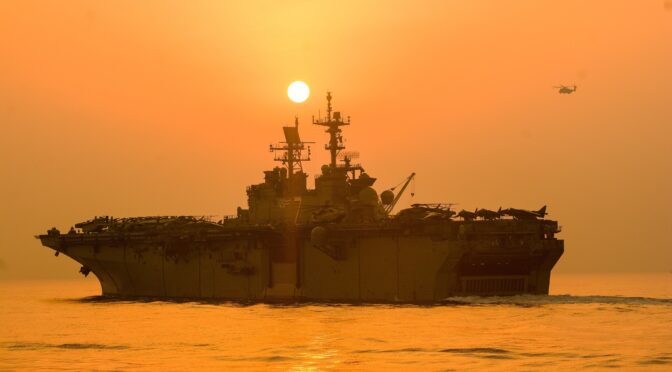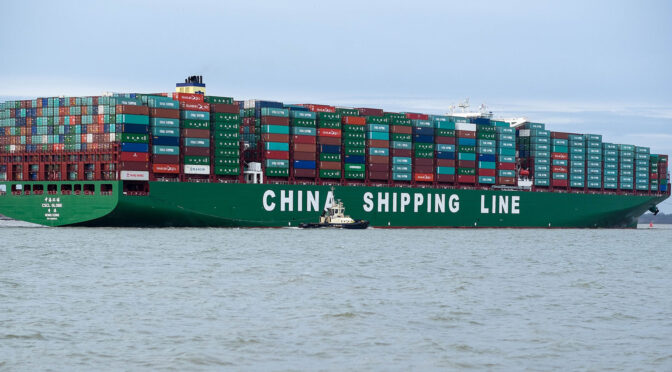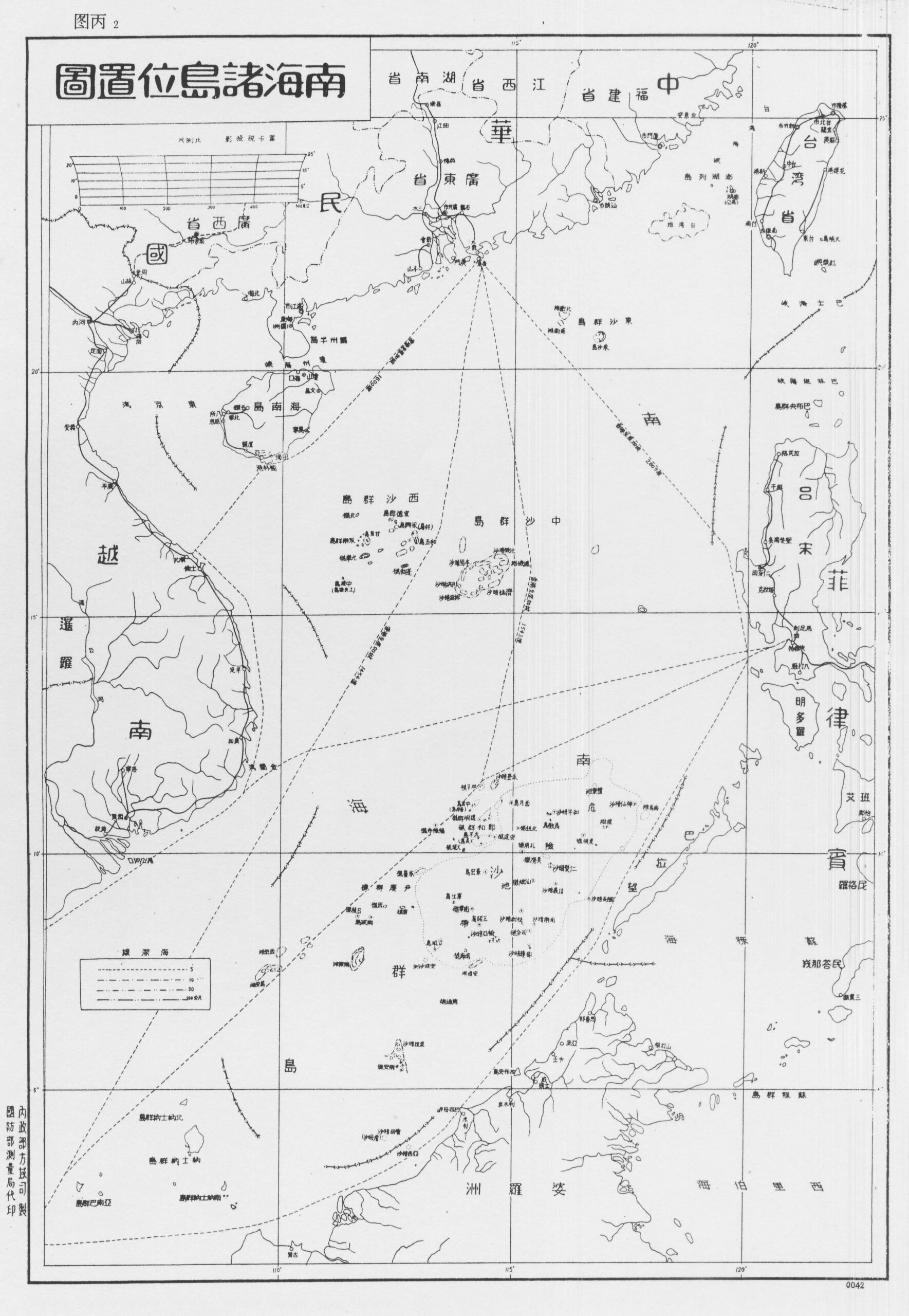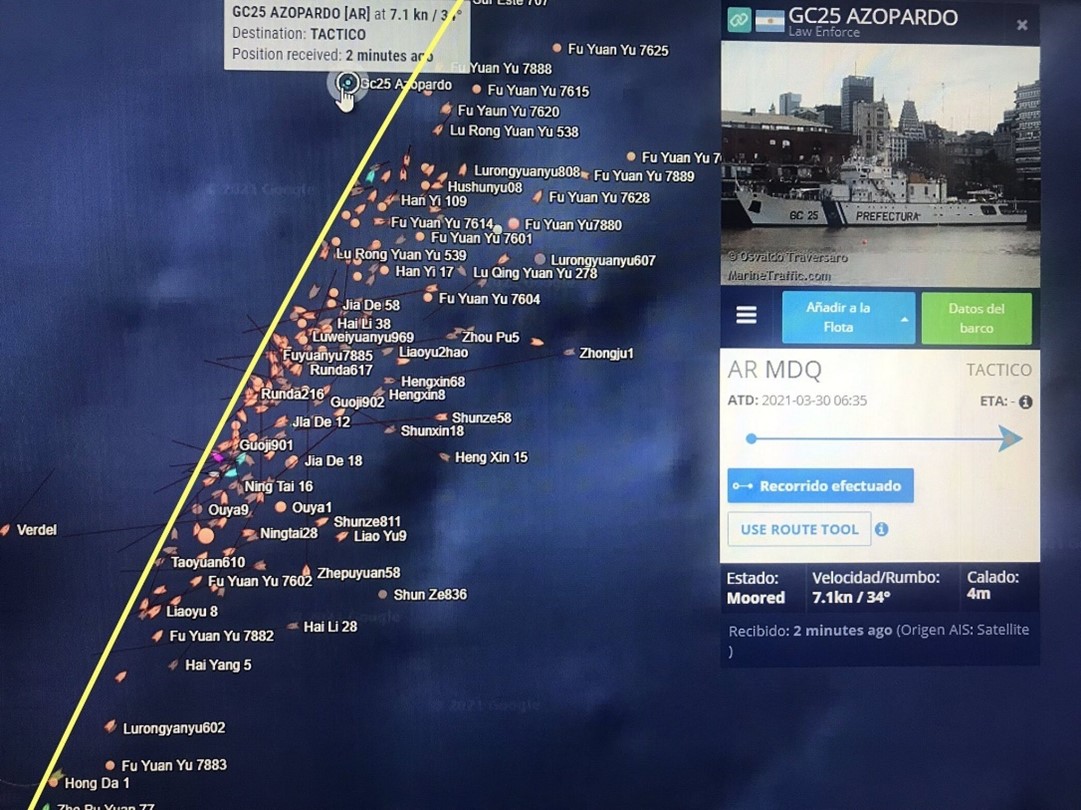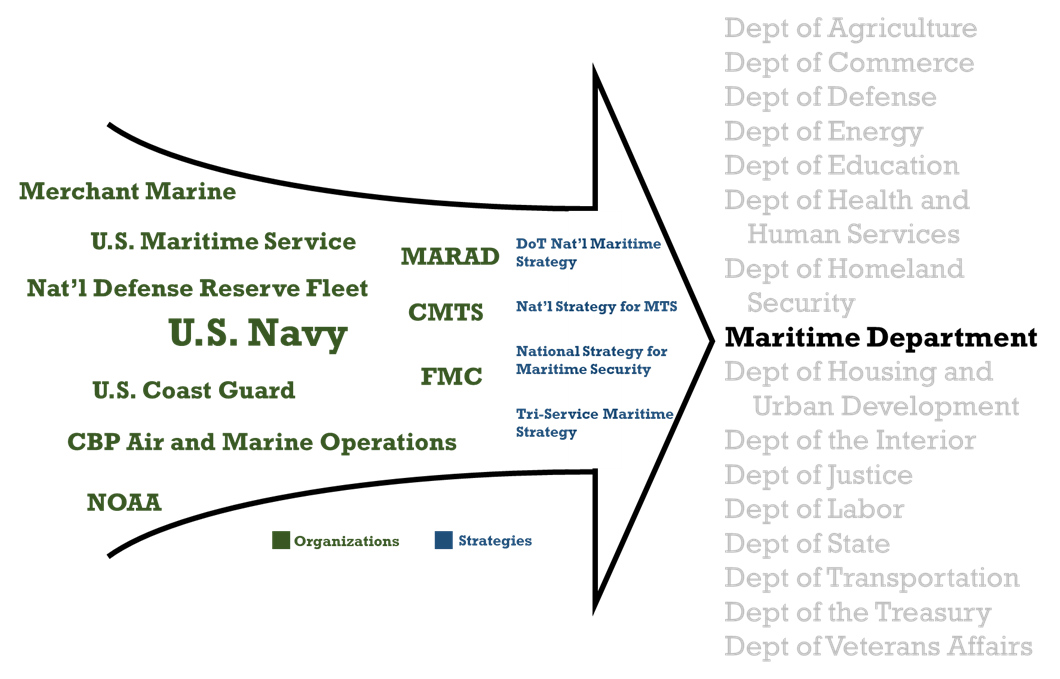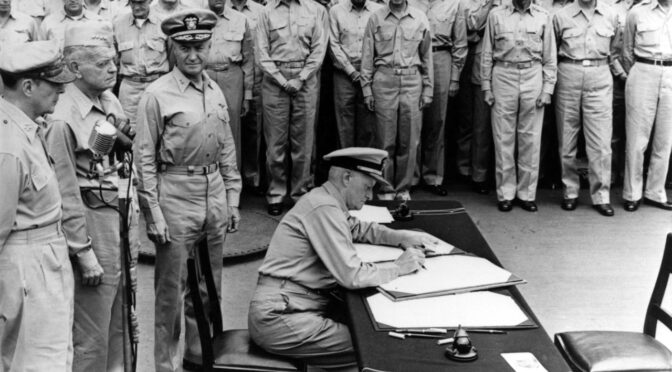By Robert C. Rubel
The more deeply one thinks about strategy the harder it is to pin down exactly what it is. This problem is more than an academic musing when it comes to the Navy. The Navy routinely publishes documents that it calls strategy, but these vary widely in form and focus, and in any case are the result of different processes, so much so that it is hard to recognize some as actual strategy. In her recent CIMSEC article Congresswoman Elain Luria contends that the 1986 Goldwater-Nichols Act “effectively ended U.S. naval strategy.” What she means is that if one regards strategy as a plan for defeating an enemy, then the Navy no longer has a role in developing such plans, a marked difference from the early 1980s when the Navy developed its Maritime Strategy, a global plan for confronting the Soviet Union in a conventional war. Without such a plan, she contends, the Navy’s budgets are built on a foundation of sand. If so, the Navy’s current strategic document Advantage at Sea is an insufficient guide to force development. In parts one and two of this series of articles I discussed the factors that would influence the content of a new maritime strategy of the sort Congresswoman Luria calls for. In this article I will discuss the process of strategy, focused on the Navy’s case.
In 1981 Chief of Naval Operations Admiral Thomas Hayward established the Strategic Studies Group (SSG) and the Center for Naval Warfare Studies (CNWS) at the Naval War College to advance the quality of strategic thinking in the Navy. From its founding up until World War II the College had a major influence on Navy strategy and force development. In the case of the Maritime Strategy, reports from the SSG and the results of the Global Wargame series held at Newport provided significant inputs and support. The Maritime Strategy originated with Admiral Hayward’s Sea Strike strategy when he commanded Seventh Fleet. That nugget of an idea was then expanded, briefed, argued over, coordinated, modified and ultimately formalized over the course of six years. Importantly, it gained the support of both the Secretary of the Navy and President Reagan, leading to the creation of the “600 Ship Navy.”
In early July 2006 Vice Admiral John Morgan, then the Navy’s Deputy CNO for Operations and Strategy, visited the Naval War College to receive a brief on its proposed process for developing a new maritime strategy document as called for two weeks previously by then-CNO Admiral Mike Mullen. As the newly-designated Dean of the Center for Naval Warfare Studies I was tasked to design and lead that project. I briefed the Admiral as we slowly motored around Newport Harbor in the College’s “barge.” Morgan stressed to me before the brief that he wanted a broadly collaborative process, various stakeholders such as industry and fleet units being involved. The underlying purpose of the new strategy was to somehow elicit greater international cooperation on maritime security.
After I finished my brief, Morgan said “Okay, do it.” I then asked him if I could invite international officers to participate in the development process. He thought for a moment and then said yes. At that point I responded “Okay, Admiral, do you understand that you have just selected the strategy and everything from here on out is execution?” He smiled and said yes, he understood. From that point forward, process and product merged in the development of the 2007 A Cooperative Strategy for 21st Century Seapower (CS21). Achieving increased international naval cooperation required developing greater levels of trust, and giving other nations a voice in the Navy’s new strategy was a key part of the mechanism. A nine month program of workshops, games and international consultations followed. The formal document, announced at the 2007 International Seapower Symposium, although entitled a strategy, was actually a tool to advance the underlying strategy of courting international cooperation. In the years afterward international maritime security cooperation mushroomed. However, a new template for fleet architecture to execute the strategy, which originated with a strategy option submitted by Prof. Wayne Hughes of the Naval Postgraduate School, was ignored by the Navy’s resource directorate. It would have created a “bi-modal” fleet that contained a large number of smaller, single purpose ships in addition to the traditional large combatants.
Concurrently with the CS21 development process Vice Admiral Morgan worked on creating a formalized strategy development process for the Navy Staff. It reflected a desire to make strategy development a collaborative process both within and external to the Navy Staff. The result was codified into a draft instruction but opposition from the Resources Directorate (N8) killed it and it resides, unsigned and forgotten, in some file drawer in the Pentagon. I later asked the chief analyst in N8 how they incorporated Navy strategy documents into their budget preparations. He responded that they didn’t; they developed their own strategies. Thus from an organizational perspective, budget and strategy development were isolated from each other.
Fast forward to 2011 when Admiral Jonathan Greenert became Chief of Naval Operations. He, like many naval officers, were not satisfied with CS21 because they felt it had insufficient emphasis on warfighting. He wanted a “refresh” of the 2007 document; that is, a rewording to insert more traditional Navy emphasis on high end combat. The revised document was supposed to be issued within a month or so of him taking office. N51, the strategy shop, came to NWC and asked us to do a rewrite. I initially refused, saying that we were a research organization not a staff. However they reminded me that we were a Navy organization and bound to respond to OPNAV requests, so I set my faculty to work. We produced what I thought was a decent draft, the watchword being first do no harm to the international political capital CS21 had generated. This draft disappeared into the bowels of N3N5 never to be seen again.
The admiral in charge of N5 decided that his folks, i.e. the occasional available captain, would do the rewrite. The process of wordsmithing dragged on within the cubicles of the Navy Staff until March 2015. At one point I received a phone call from a commander on the Navy Staff who wanted the working papers from the 2006 project. It seemed that when they briefed version 12 (!) to the VCNO, Admiral Michelle Howard, she asked why the document said what it did and they did not have a good answer. Eventually, at a Naval Institute-sponsored conference in Washington, DC, Senator Ayotte of Maryland, responding to a question about who the audience for a new strategy should be, answered Congress. This broke the logjam and eventually the Navy issued the “refresh” to CS21 (CS21R), which turned out to be a pleading document to Congress for a larger fleet. Despite being a well-written justification for increasing the Navy’s size, it had no influence.
These case studies reveal several things that are key to a successful strategy development process. The first is that a document is not a strategy; rightly understood a strategy is an idea for solving a problem. The idea behind the Maritime Strategy was to intimidate the Soviets by aggressive forward presence operations. The idea behind CS21 was to court foreign cooperation by bringing them into the strategy development process. Both were solutions to global strategy problems that involved the unified world ocean. Congresswoman Luria defines it as the way military means are used to achieve political ends. The respective documents, the Maritime Strategy’s various classified briefs and ultimately the unclassified Proceedings Article, and the CS21 document itself, were tools to aid in the execution of the strategy or to garner support for it. In contrast, the CS21R document was meant to be the strategy; a document meant to gain Congressional support for a larger fleet, with no strategic problem solution underpinning it. Wordsmithing does not constitute strategy development. The upshot is that for practical purposes, strategy for the Navy should be an idea for solving a strategic problem that involves the world ocean. By strategic I mean what Congresswoman Luria means; using the Navy’s forces to achieve desired international political effects.
The second thing is how the Navy arrives at the central idea. A small group of officers brainstorming in a cypher-locked Pentagon office might produce a viable idea, and sometimes this approach is necessary, but it appears that wide collaboration has had more success. Moreover, strategic problems are generally multi-faceted and hard to grasp, so extensive research and gaming should be used to explore, refine, and finally articulate the problem. The Navy could certainly benefit from having a cadre of officers specially educated and experienced in strategy development, but that does not mean that the development process should take place exclusively within the Navy Staff. The connecting link between the two successful strategy cases just described is the Naval War College. The institutional context within which the research, gaming and thought that supports strategy development is important, and the College’s academic culture and ability to collaborate makes it the appropriate place for such activity to take place, even if the Navy Staff has ultimate responsibility for selecting the strategy and crafting any briefings and documents. Other venues such as think tanks or the Navy Staff itself lack complete objectivity for various reasons, and despite Congresswoman Luria’s advocating for the 2017 CSBA study, a blank slate is needed for the new maritime strategy project.
All of this begs the question of whether strategy development ought to somehow be formalized and institutionalized per Admiral Morgan’s ill-fated effort or whether it should be ad hoc, responding to the particular circumstances of the time. This writer favors the latter approach, although the history of War Plan Orange, the strategy for defeating Japan in the Pacific, suggests the former. As it stands, the Navy would be well-advised to initiate an ad hoc project at this point, even though it has, with the stand-up of the new N7 directorate, created an organizational home for strategy development whose authorities reach into the analysis and resource arenas. The smart move for N7 would be to act as a strategy development sponsor, absorbing and integrating the War College’s research and gaming efforts as well as think tanks such as the Center for Naval Analyses and perhaps those outside Navy lifelines like CSBA. As described by writers like Trent Hone and John Kuehn, the other empowering element of Navy strategy development during the years from the turn of the Twentieth Century up to World War II was the continuing relationship between the Naval War College, the Fleet, and the Navy Staff. As War Plan Orange demonstrated, iteration is a path toward better strategy, and N7 is well positioned to promote a coherent flow of thinking and rethinking of strategy among the relevant institutions and thereby informing Navy budgets, doctrine and shipbuilding plans.
I must agree with Congresswoman Luria’s complaints about the structure of the Unified Command Plan and its strategy development process. American military power, and especially its seapower, has become a scarce resource relative to the demands of the U.S. grand strategy of supporting and defending a rules-based, global liberal trading order. When resources become scarce, centralized planning is needed to ensure their efficient distribution. It is dangerous to simply mete out scarcity equally among the COCOMs, which is apparently all the current system is capable of. Moreover, as the current debacle in Afghanistan again demonstrates, throwing policy problems over the transom to the military that should rightly be handled by State, Commerce, and the other Cabinet departments, produces mindless overreach and ultimate tragedy. The Navy has, from time to time, had to step in and solve strategic problems that in theory should have been handled by either the Joint Staff or the Office of the Secretary of Defense, but neither was either capable or interested. The current problem that spawned Congresswoman Luria’s article – the looming loss of American command of the sea – is global, strategic and maritime, and apparently the Navy is the only organization capable of coming up with an idea – a strategy – for how to solve it. But to do so, the Navy must learn from both its past successes and failures and put into motion a rational process for developing a new maritime strategy.
Robert C. Rubel is a retired Navy captain and professor emeritus of the Naval War College. He served on active duty in the Navy as a light attack/strike fighter aviator. At the Naval War College he served in various positions, including planning and decision-making instructor, joint education adviser, chairman of the Wargaming Department, and dean of the Center for Naval Warfare Studies. He retired in 2014, but on occasion continues to serve as a special adviser to the Chief of Naval Operations. He has published over thirty journal articles and several book chapters.
Featured Image: STRAIT OF HORMUZ (Aug. 4, 2021) The Wasp-class amphibious assault ship USS Iwo Jima (LHD 7) transits the Strait of Hormuz, Aug. 4, 2021. (U.S. Navy photo by Seaman Logan Kaczmarek)

